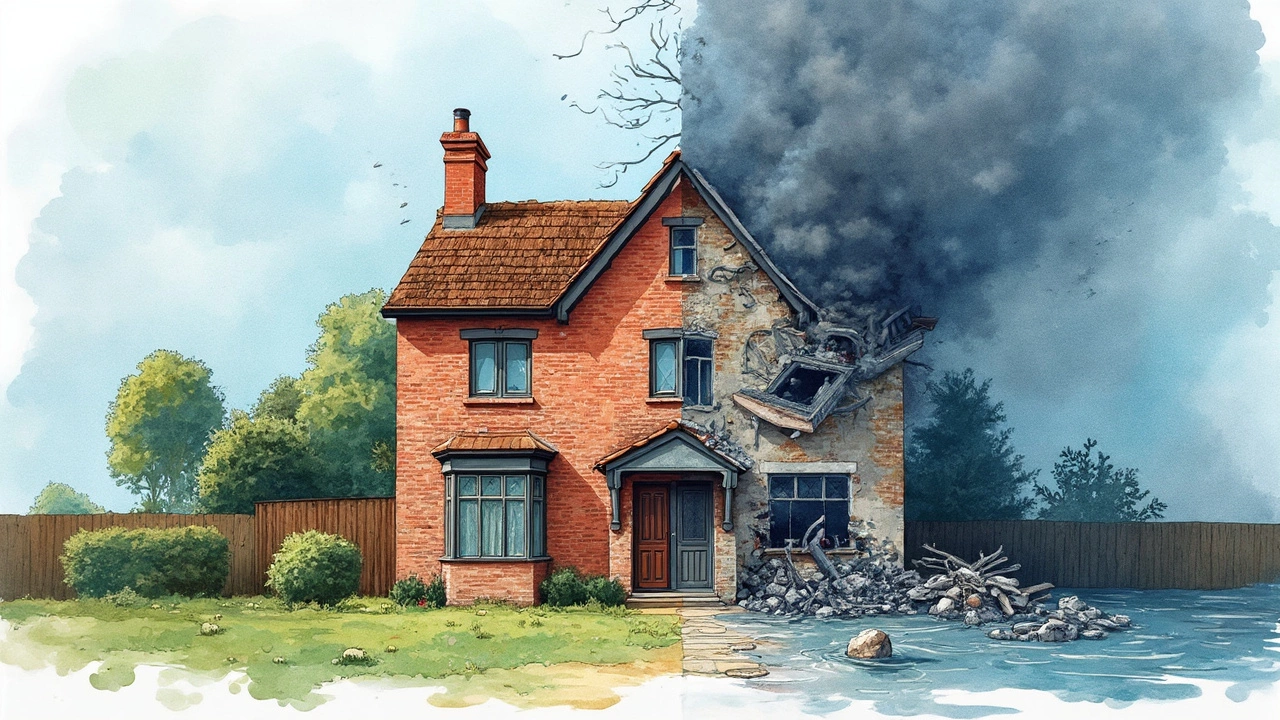Homeowners Coverage Gaps: What They Are and How to Fix Them
If you think your home insurance covers everything, you might be surprised. Most policies leave out certain scenarios, and those blind spots can pop up when you least expect them. In this guide we’ll show you the most common gaps, why they matter, and what you can do right now to close them.
Common Gaps in Home Insurance
First, look at the basics. Standard policies usually cover fire, theft, and some weather damage, but they often skip things like flood or earthquake. If you live near a river or on the coast, a flood claim can be denied unless you add separate flood cover.
Another surprise is personal‑property limits. Your policy might list a low amount for electronics, jewelry or art. When a break‑in happens you could end up paying out‑of‑pocket for those high‑value items.
Liability coverage can also fall short. If someone trips on your driveway, the policy may only pay a few hundred thousand pounds. For a serious injury, that amount can disappear fast, leaving you exposed.
Don’t forget about “loss of use.” If a covered event forces you out of your house, many policies only reimburse a small portion of your temporary living costs. You might end up paying rent, food and transport yourself.
Finally, many homeowners forget about optional add‑ons like accidental damage or legal expenses. Those extras protect you from everyday mishaps and costly court fees, yet they’re often left off the default quote.
How to Close Those Gaps
Start by reviewing your current policy line by line. Write down any limits that feel low – especially for valuables and liability. If you see a low ceiling, ask your insurer about a rider or endorsement that raises the limit.
Next, assess your location. If flood or earthquake risk is real, shop for a separate policy or add a surplus line endorsement. It’s usually cheaper than you think and can save you from a massive claim denial.
Make a detailed inventory of your possessions. Photos, receipts and a spreadsheet help you prove the value of items if you need to claim. Use that inventory to justify higher personal‑property coverage.
Ask about “loss of use” coverage. A good policy will cover hotel stays, meals and other essential costs while your home is being repaired. Raise the limit if the default amount won’t cover a realistic scenario.
Consider optional add‑ons that match your lifestyle. If you work from home, accidental damage to office equipment is worth adding. If you rent out part of the property, legal expense cover can protect you from tenant disputes.
Finally, compare quotes from at least three insurers. Some companies bundle these extras at a lower price, while others charge a premium for the same protection. Use an online comparison tool or a trusted broker to see the full picture.
By taking a few minutes to spotlight the gaps and asking the right questions, you can turn a risky policy into solid protection. Your home is likely your biggest investment – make sure the insurance backing it is just as strong.
Understanding Homeowners Insurance: What's Often Not Covered?

Homeowners insurance is vital, but not every type of damage is covered. Learning about typical exclusions, such as flood and earthquake damage, can save future headaches. Being aware of what your policy doesn’t cover helps homeowners make informed decisions to fill those gaps with additional policies. This proactive approach can protect against common pitfalls and ensure comprehensive protection for valuable assets.
Read More >>